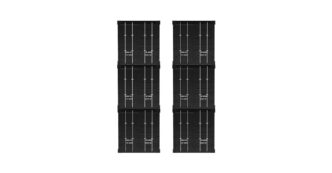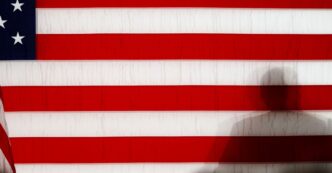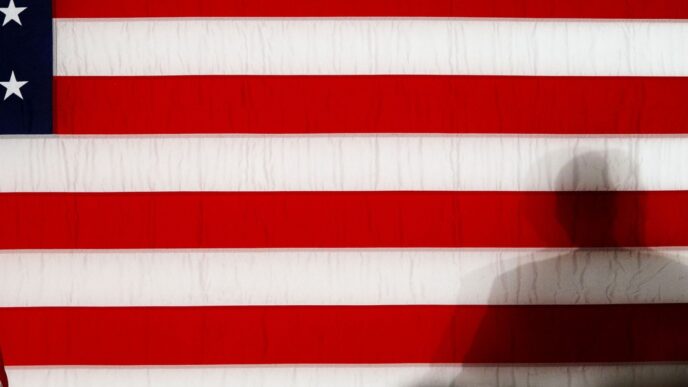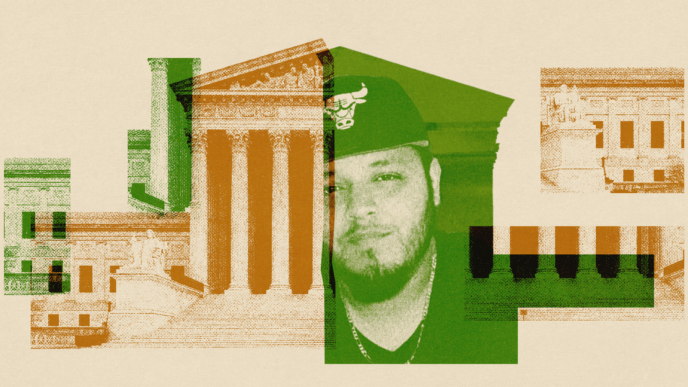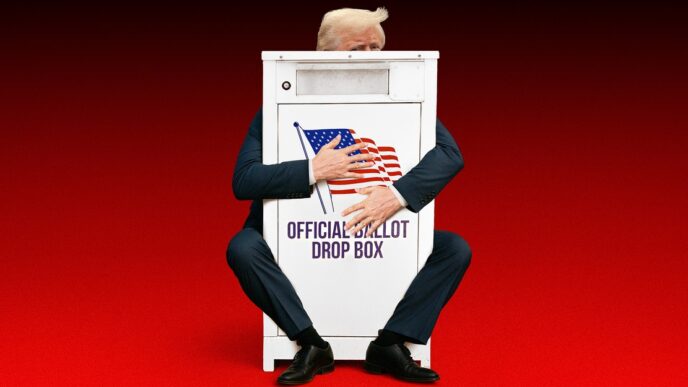The era of massive global tariffs lasted approximately 13 hours. After half a day of chaos in the bond market, Donald Trump announced that he was pausing his “reciprocal” tariffs on all countries besides China for 90 days. That retreat might have averted a worldwide economic meltdown, but to conclude that the danger is over would be a big mistake. The whirlwind of the past week has paralyzed businesses, rattled financial markets, undermined confidence in the dollar, frozen the Federal Reserve, and scared consumers. Most of that damage will not be undone by Trump’s tariff pause. The world has seen things it cannot unsee.
Yesterday morning, the U.S. economy appeared to be on the verge of catastrophe. The stock market had already shrunk by trillions of dollars in just a few days. Usually, when the stock market falls, investors flock to the safest of all safe assets, U.S. Treasury bonds. This in turn causes interest rates to fall. (When more people want to buy your debt, you don’t have to offer as high a return.) But that didn’t happen this time. Instead, investors started pulling their money out of Treasury bonds en masse, causing interest rates to spike in just a few hours.
Suddenly the entire global financial system appeared to be at risk. If U.S. Treasuries were no longer considered safe—perhaps because the country that issues them had recently shown its willingness to tank its own economy in pursuit of incomprehensible objectives—then no other asset could be considered safe either. The next step might be a rush to liquidate assets, the equivalent of a bank run on the entire global financial system. “This scenario is more serious than 2008,” Adam Tooze, an economic historian who wrote the definitive history of the financial crisis that triggered the Great Recession, argued on Substack.
In normal times, the American government has a backstop in the event of either a recession or financial crisis: the Federal Reserve. In the case of a recession, the central bank can lower interest rates to get the economy moving again; in the case of a looming financial meltdown, it can provide emergency liquidity to bondholders or banks to quell panic. Both of those moves are far less likely, however, if the central bank is also worried about tariff-induced price increases and the inflationary spiral they could set off. “Our obligation is to keep longer-term inflation expectations well anchored and to make certain that a one-time increase in the price level does not become an ongoing inflation problem,” Fed Chair Jerome Powell said on Friday, even as the stock market plummeted. Translation: If the economy crashes while inflation is high, good luck!
Now that Trump has pulled back from the brink, the prospect of an imminent crisis has been averted. But lasting harm has already been done. Trump’s mercurial approach to tariffs has long generated uncertainty among businesses (who are hesitant to hire or invest), consumers (who are afraid to spend), and the Fed (which is loath to lower interest rates). Announcing a 90-day tariff pause does very little to address that uncertainty. Trump has shown his willingness to let enormous tariffs go into effect, if only for half a day; a Truth Social post declaring he won’t do so for three months probably will not convince either businesses or markets that he’s done changing his mind.
Business leaders and investors will wake up every day wondering whether an offhand comment by a foreign leader or a segment on Fox News will inspire him to announce yet another policy reversal. And they will live with the desultory prospect that, at the end of the three-month pause, the world will go through all of this again. How could a manufacturer decide whether to open a new factory, a consumer decide on a major purchase, an employer decide whether to expand its workforce, or an investor decide which companies to invest in given that level of unpredictability? What would compel the Federal Reserve to lower interest rates if it doesn’t know whether a new inflationary shock is right around the corner?
Perhaps even more alarming is the potential impact on the bond market. The perceived safety of U.S. Treasuries is rooted in the assumption that the American government will always be willing and able to pay back its debts. But if the president is prepared to single-handedly tank the economy in the pursuit of incoherent objectives—and with little care for the consequences of his actions—then, when push comes to shove, can he be trusted to pay back bondholders? “It’s like the tide went out and everyone realized everyone else was naked,” Eric Van Nostrand, a former assistant secretary for economic policy at the Treasury Department, told me. “Investors will likely conclude from all this that Treasuries aren’t the safe haven they were once thought to be.”
If that happens, one result will be permanently higher interest rates, as investors will demand a greater return from the government in exchange for holding its bonds. Higher rates will make homes less affordable for consumers, investments less viable for businesses, and budget deficits more costly for the federal government. It will also make the bond market more sensitive to shocks and prone to wild gyrations, increasing the likelihood of a future financial meltdown. Over time, it could even cause the rest of the world to seek alternatives to the dollar as the world’s reserve currency, undermining a pillar of America’s geopolitical and financial power.
This is all without mentioning the most remarkable thing about the tariff pause: It isn’t really a pause at all. Even as Trump called off the eye-popping “reciprocal tariffs”—such as a 46 percent tariff on Vietnam, and 50 percent on the tiny landlocked African country of Lesotho—he still kept a 10 percent minimum tariff on nearly every country on the planet, and announced that he would raise tariffs on China to 125 percent. (In a further indication of the quality of communication here, the administration clarified today that tariffs on China would in fact be set even higher, at 145 percent.) As the economist Paul Krugman points out, because China is America’s third-largest trading partner—it accounted for 13 percent of U.S. imports last year—this change will push the U.S.’s average tariff rate on imports even higher than when the reciprocal tariffs were in place. Bloomberg estimates that the move will “virtually wipe out all U.S. imports from the Asian manufacturing powerhouse over the medium term.”
China, for its part, has already implemented an 84 percent tariff on all U.S. goods, and may yet raise the rate further. The result will be an all-out trade war between the world’s two largest economies that may very well end with their economies completely walled off from each other. Consumers will face skyrocketing prices for a wide range of goods, businesses will struggle to pay the cost of higher inputs—43 percent of imports from China are inputs for businesses—and any company that now depends on sales to China could be crushed.
Trump’s defenders have praised his 13th-hour tariff pause as a brilliant display of economic gamesmanship. They would remind you that all’s well that ends well. The problem is that nothing here has ended well. In fact, it hasn’t even ended.
